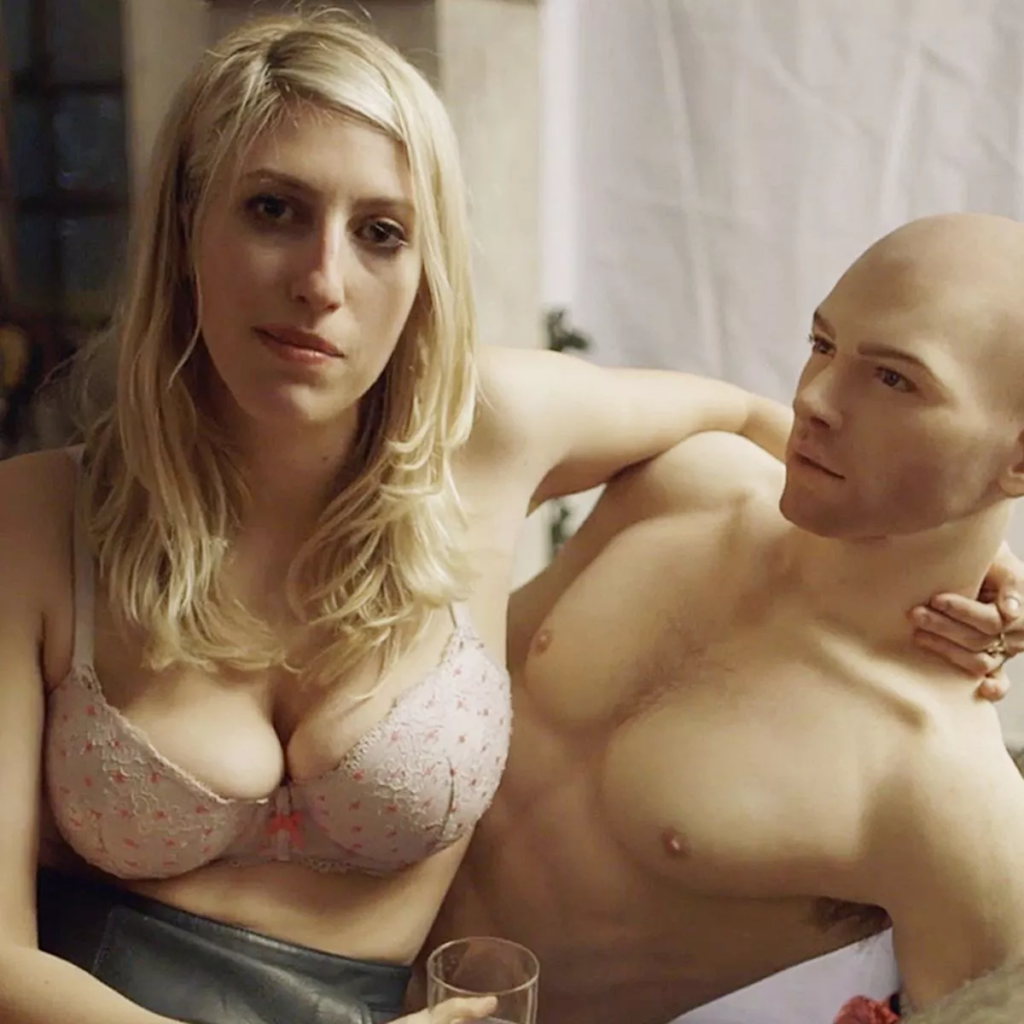From the bustling streets of Tokyo, where I first delved into the fascinating realm of humanoid robotics, to the solemn corridors of academic institutions, the world of sex dolls has been a significant part of my journey. It’s a topic that often raises eyebrows but has deep roots in therapeutic practices, evolving as rapidly as our society’s perception of intimacy.
Sexual therapy – a term that, for many, conjures images of couples’ counseling or the exploration of personal desires. However, in recent times, the landscape of sexual therapy has expanded, incorporating tools and methodologies previously unthought-of. Among these tools, sex dolls stand out not just as companions but as instrumental facets of rehabilitative and therapeutic practice.
On the surface, the bridge between a silicone companion and a therapy room might appear tenuous. But as I’ve come to realize over the years, especially with my background in material science and human sexuality, the synergies are profound. Sex dolls, often discretely discussed in society’s corners, have found a new light: assisting therapists and patients in breaking barriers and rebuilding connections.
Picture this: A sunlit therapy room adorned with art that challenges societal norms – a reflection of my love for expressive sculptures. The conventional chaise lounge and a lifelike silicone companion sit in that room. It is an instrument of healing, a bridge to rediscovering intimacy, and a testament to the incredible strides in technology and psychology merging.
In this exploration, we’ll journey into the world of sexual therapy, understanding how these sex dolls are changing the narrative, one session at a time.
Historical Use of Surrogate Partners in Therapy
Long before our current age, where sex dolls are sculpted with artistry and precision, there was a different form of surrogate partnership. It was a time when intimacy and physical connection were recognized quietly as essential components of healing and well-being.

The Pioneers
Masters and Johnson, names that resonate deeply within the walls of sexuality research, were among the pioneers who recognized the therapeutic potential of surrogate partners. Their work in the 1960s and 1970s cemented the idea that surrogate partners, real humans trained to help patients overcome various sexual issues, could be transformative.
I encountered a poignant case study while flipping through aged, dusty journals in one of my earlier research projects. It was the story of a woman scarred by a traumatic event who found solace and healing through her sessions with a surrogate partner. Those pages’ intimacy, trust, and progress chronicled were an early testament to the power of touch and connection.
Evolution from Human Surrogates to Sex Dolls
While human partners laid the foundation of surrogate therapy, it’s crucial to understand how we transitioned to incorporating lifelike dolls into the mix.
- Artistry meets Needs: As our technological prowess grew, so did our ability to craft love dolls that mirrored human touch, warmth, and form. My visits to Tokyo, with its fervor for humanoid robotics, further highlighted how deeply intertwined our desires for connection and technology were.
- Addressing the Taboo: Societal stigma often surrounds surrogate partnerships. The introduction of lifelike dolls provided a discreet alternative. The dolls weren’t just silicone structures; they represented a bridge to intimacy without the complications or judgments of society.
- Controlled Therapeutic Environments: Using lifelike dolls allowed therapists to create controlled environments tailored to clients’ needs, ensuring consistent, effective sessions.
The Advantages of Using Sex Dolls in Therapy
When broaching the topic of using lifelike dolls in therapeutic environments, one might receive skeptical looks or even gasps of disbelief. Yet, beneath the initial shock lies a realm of potential, understanding, and healing.

A Tool Like No Other
With their intricate design and uncanny realism, Lifelike dolls bring something uniquely invaluable to the therapeutic table. Drawing from both my academic research and personal observations, I’ve delineated some undeniable advantages:
- Safety and Anonymity: One of the most beautiful aspects of using these companions in therapy is the absence of judgment. The doll doesn’t possess preconceived notions or biases. This creates an environment of absolute safety, where the patient can express, explore, and understand their desires and fears without the weight of societal judgment.
- Consistency in Sessions: Human surrogates, as compassionate and trained as they might be, are still subject to their moods, emotions, and imperfections. A lifelike doll offers unwavering consistency, ensuring that each therapy session starts on the same note.
- Tailored Experiences: Therapists can use these dolls to create scenarios tailored to patients’ needs, ensuring targeted and effective sessions.
My Dive into Lifelike Therapeutic Interventions
During my research phase in Tokyo, I had the chance to witness a therapeutic session using a lifelike doll. The room, softly lit, echoed with a profound silence. As the session unfolded, I observed the patient, initially hesitant, gradually warm up to the doll. The transformation was palpable. Once filled with apprehension, the room buzzed with relief and understanding.
Overcoming the “Unreal” Stigma
It’s vital to note that while these dolls aren’t ‘real’ in a biological sense, the emotions they can elicit and the barriers they can break are undeniably genuine. I often draw parallels between these companions and sculptures as an art enthusiast. Just as a piece of art can evoke profound feelings, so can these lifelike dolls in a therapeutic setting.
- Tangible Progress: I’ve interviewed numerous therapists who’ve seen tangible progress in patients using lifelike dolls. These success stories bolster the argument for their inclusion in modern therapeutic practices.
- Challenging Norms: Using these dolls in therapy is not just about the individual session. It’s about challenging societal norms, pushing boundaries, and redefining therapeutic interventions.
Material and Psychological Comfort
The marvels of material science have paved the way for the uncanny realism exuded by modern lifelike dolls. However, their therapeutic significance stretches far beyond their silicone and TPE constructs.

Material Mastery and Sensory Appeal
Diving into my material science background, I’m continually fascinated by the advancements in silicone and TPE. These materials are:
- Skin-like Texture: Advanced silicone compounds give these dolls a feel eerily close to human skin, offering a tactile comfort that can be therapeutic.
- Durability and Safety: With proper care, these materials can last for years without degrading, providing a consistent therapeutic tool. Moreover, they’re hypoallergenic, ensuring safety during intimate sessions.
The Psychological Embrace
Beyond the touch, there’s the realm of psychological comfort these dolls provide:
- A Void Filled: For many, these lifelike dolls fill a void – be it a lost companion, an unfulfilled desire, or an avenue to explore suppressed emotions. They offer a silent, non-judgmental space for one to reflect and heal.
- Recreation of Scenarios: Lifelike dolls can be incorporated into various therapeutic scenarios, enabling individuals to relive and process traumatic or impactful events under the watchful eyes of a therapist.
Success Stories and Testimonials
John’s Journey of Rediscovery
John, a 40-year-old trauma survivor, had built walls around his emotions after a distressing event. Through the use of a lifelike doll in his therapy sessions, he was able to recreate the traumatic scene, process the event, and rebuild his emotional fortress. Today, John leads a fulfilling life, attributing much of his healing to the lifelike doll used in his therapy.
Lily’s Leap into Confidence
Lily, previously apprehensive about intimacy due to societal judgment regarding her body, found solace in the embrace of a lifelike doll. The doll acted as a catalyst in her sessions, helping her navigate her insecurities. Over time, her relationship with her body transformed, improving real-life interpersonal relationships.

From the Words of Therapists
While these stories are close to my heart, I’ve also gathered testimonials from therapists around the world:
- Dr. Elena Morozova: “Introducing lifelike dolls in therapeutic sessions has revolutionized how I approach certain traumas. The results are often rapid and profound.”
- Prof. Max Haynes: “There’s a bridging gap between the conscious and subconscious when these dolls are used. It’s like unlocking a door that was previously sealed.”
Conclusion: Lifelike Dolls – The Uncharted Waters of Therapy
Reflecting on the intersection of my material science background and my passion for understanding human emotions, I’m genuinely excited about the promising horizon of lifelike doll therapy. While society has often perceived these dolls through a narrow lens, it’s enlightening to witness their potential for therapeutic healing.
In the heart of Tokyo, where my journey began, I saw the first glimpses of this synergy between man, material, and emotion. As I pen down these thoughts, I’m filled with hope. A hope that these sex dolls, often misunderstood, will pave the way for countless healing journeys, bridging gaps and mending hearts.
Here’s to exploring uncharted waters and to every individual finding their unique path to healing.






